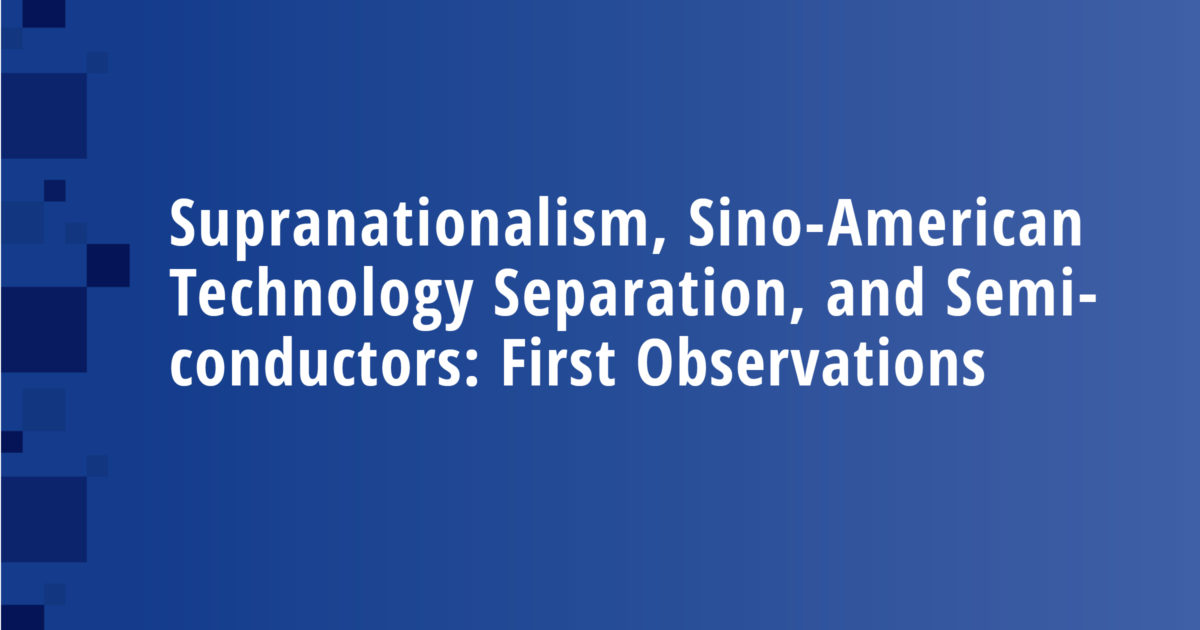
Global forces have shaped the world since the industrial and digital ages. A recent perspective on globalization acknowledges the growth of three supranational economic, social, and manufacturing blocs, namely the USA, the EU, and most recently, China. In this larger picture China contends with the US to become the largest economy in the world. Recent developments in the US–China trade conflict have centered on digital technology and have set the two countries on a path towards a technology separation. This technology separation will disrupt the unique and strategically important global value chains of digital technologies. We define digital technologies as the stack of integrated hardware and software systems that enable various end applications to emerge from computation.
The technology separation will happen in the lower hardware levels of the technology stack, that is, in knowledge- and capital-intensive semiconductor technology, design and manufacturing. A separation within semiconductor technology could have serious implications for Europe, but especially for smaller open economies such as that of Finland. The key to designing Europe’s semiconductor technology strategy is understanding the history, technologies, and dynamics of the semiconductor industry as well as understanding industrial policies regarding semiconductors in the USA and China. What are the different options for Europe if the technological separation continues?
Arkadiagatan 23 B
00100 HELSINGFORS
+358 (09) 609900